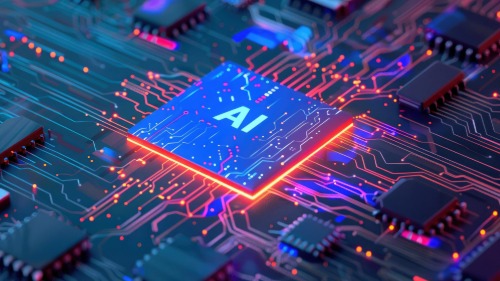Quick Summary: Under the IndiaAI Mission, the Government of India has allocated ₹177 crore worth of GPU resources (H100 and H200 SXM GPUs, totaling 12.9 million GPU hours) to support the development of India’s foundational AI model. E2E Networks Limited will provide the GPU infrastructure and computing backbone, while Gnani AI will use these resources to train and build the foundational model. This collaboration represents a crucial step in India’s AI journey,
Full Article: On September 2, 2025, E2E Networks Limited announced that the Government of India, under its IndiaAI Mission, allocated H100 and H200 SXM GPUs totaling 1,29,94,560 hours to Gnani AI for developing India’s foundational AI model. This allocation valued at ₹177 crore is significant because access to high-performance GPUs has long been a bottleneck for Indian startups and research labs.
The use of NVIDIA’s H100 and H200 GPUs with InfiniBand (IB) network on a single fabric puts India on a path toward high-throughput distributed training, similar to the infrastructure used by OpenAI’s GPT-4 training and Google DeepMind’s Gemini models.
Competing with Global Standards
Globally, the U.S. and China have set benchmarks by investing not just in raw compute but also in training ecosystems. For example:
-
OpenAI and Anthropic (USA): Train large language models (LLMs) using clusters of tens of thousands of H100 GPUs interconnected with low-latency networks. Their focus is not only model size but also reinforcement learning from human feedback (RLHF) and advanced safety training.
-
China’s Baidu, Huawei, and Alibaba: Deploy national-scale GPU clusters often backed by domestic chip design (Ascend, Kunlun chips) while also leveraging hybrid cloud frameworks. Their approach emphasizes AI sovereignty and multi-sector adoption.
-
Europe (LUMI, Leonardo Supercomputers): Focuses on energy-efficient HPC + AI hybrid training, combining GPU supercomputers with quantum research for sustainability and scientific AI.
For India to reach these standards, simply providing GPUs for a year is not enough—it must integrate scalable AI research practices, open datasets, and collaborative academic-industry ecosystems.
The Journey India Needs to Take
-
Build National AI Compute Clouds:
Instead of isolated allocations, India needs a centralized AI cloud where universities, startups, and public institutions can access GPUs securely and affordably. -
Focus on Training Paradigms, Not Just Model Size:
-
India should prioritize multilingual LLMs tuned to Indic languages (similar to BLOOM, which was trained collaboratively across nations).
-
Incorporating low-resource language pre-training and domain-specific fine-tuning can give India an edge in inclusivity.
-
-
Adopt Efficient Training Techniques:
-
Mixture of Experts (MoE) models (used by Google’s Gemini 1.5 and DeepSeek-V3 in China) drastically reduce compute requirements while scaling knowledge.
-
Parameter-efficient fine-tuning (LoRA, QLoRA) can democratize model building for startups.
-
-
Develop Data Governance and Ethics Frameworks:
Competing with the West also means trustworthy AI. The EU’s AI Act and U.S. AI safety frameworks show how governance enhances global competitiveness. India must ensure its foundational models align with ethical, unbiased, and secure AI standards.
Technical Hurdles India Must Overcome
-
Scaling Beyond 1-Year GPU Access: Global labs train models on continuous compute pipelines for months or years. India’s limited 360-day allocation may restrict long-term competitiveness.
-
Software-Compute Co-Design: The West uses custom AI training stacks (e.g., OpenAI’s Triton, Google’s JAX) to maximize GPU throughput. India must invest in homegrown frameworks rather than relying solely on PyTorch/TensorFlow.
-
Human Capital: Training world-class AI engineers through specialized AI PhDs, HPC training programs, and global exchange partnerships will be critical.
Opinion: India’s AI Moment—But the Real Test Lies Ahead
The allocation of ₹177 crore worth of GPUs is undeniably a milestone for India’s AI journey, signaling intent and capability. Yet, global competition isn’t won on hardware alone—it is won on ecosystem maturity, data readiness, technical efficiency, and sustained compute pipelines.
If India can replicate the collaborative training models of Europe, the scale of the U.S., and the sovereignty-first approach of China, it can carve out a unique position in the AI race. The GPUs are just the starting line; the marathon will be about sustained research, open innovation, and technical excellence.

